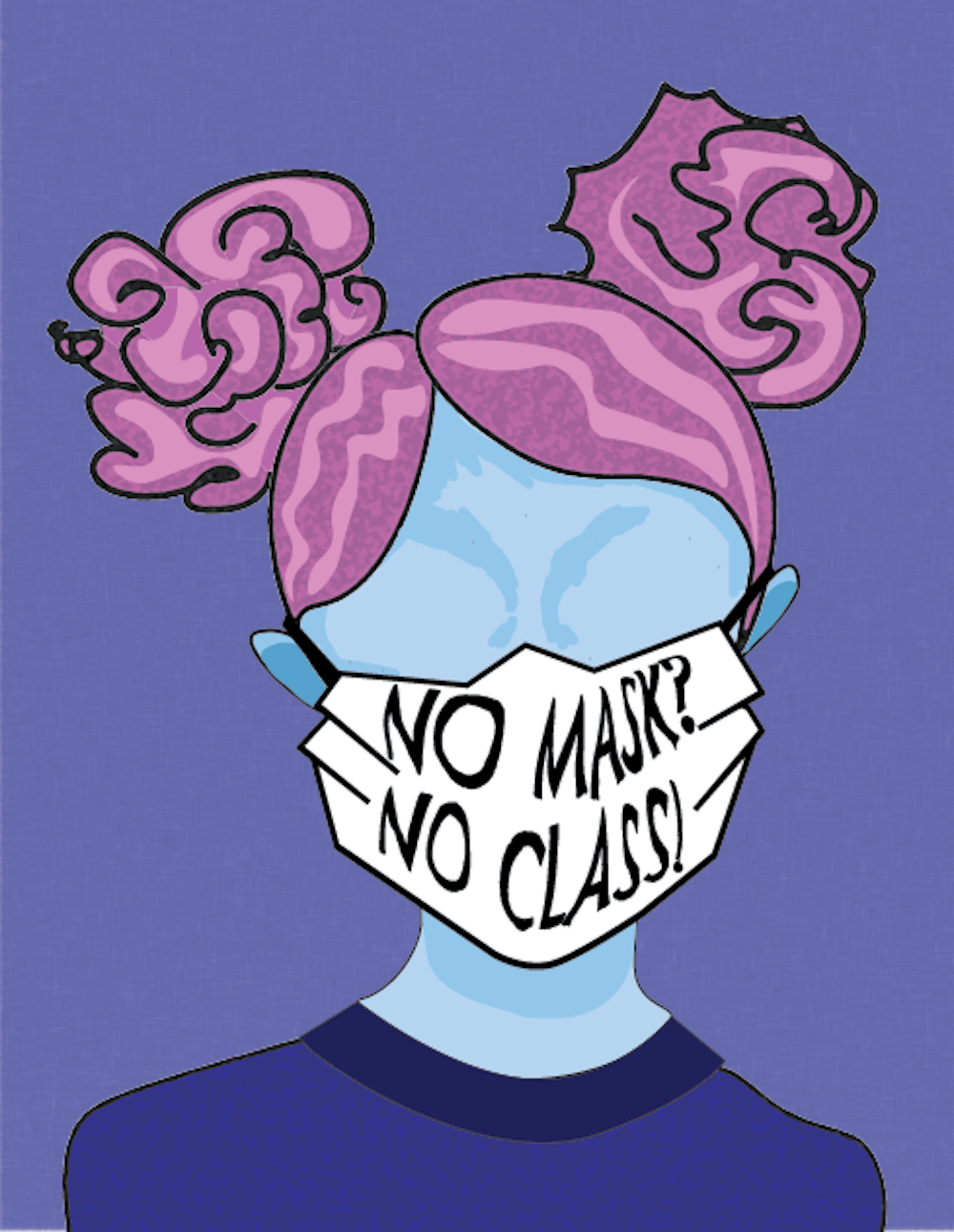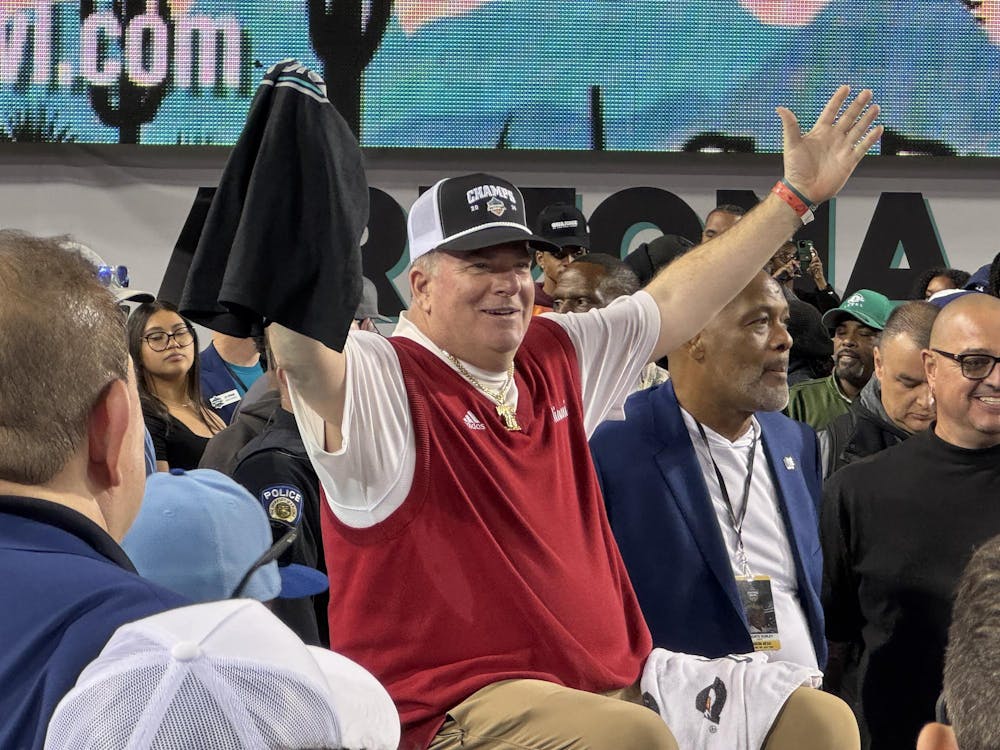With a majority of students now living in Oxford, students and professors alike have had to adapt to a new classroom environment. Even though the university’s active case number has seen a steady decline in the past two weeks, the partial return to classrooms has people worried that trend may be reversed.
According to Miami’s Healthy Together website, “Face coverings are required during all class meetings to promote the health and safety of all university members.”
For senior software engineering major Micki Smolenski, this rule hasn’t caused problems in her two in-person classes, but she feels students have a different attitude around campus.
“In my classes, the students are doing a good job of being safe and courteous,” Smolenski said.
Outside of the classroom is a different story.
“Walking around campus, you do see a lot of people outside who aren’t wearing masks, which is kind of concerning,” Smolenski said. “Personally, I’d prefer if people wore masks a little bit more when they’re walking around.”
Pascal Massie, associate professor of philosophy, has noticed a similar mindset among his students.
“As far as class is concerned, [students] are going to be safer than if you go buy something at the grocery store,” Massie said. “The problem is that a student’s life is not limited to inside the classroom. This weekend’s parties, Friday and Saturday, that’s where the danger is going to be.”
Despite this, Massie says he still feels safe in his classroom. The department of philosophy worked to standardize their approach to student safety this semester through an eight-part coronavirus protocol. Among the issues addressed by the protocol are the need for face masks, social distancing guidelines and an option for students to attend class virtually if they feel unwell.
Massie says he has not experienced any problems with students following these rules so far. He did, however, point out that his classroom in Pearson Hall prevents him from maintaining airflow like his department protocol suggests.
“I’m really disappointed I couldn’t do anything about airflow,” Massie said. “When I walked into the classroom I realized, ‘Oh shoot, no windows.’ And the door closes automatically. But we were sufficiently far away from each other, so I don’t think there was any danger.”
Anne Whitesell, assistant professor of political science, is teaching two in-person classes in Harrison Hall, where professors were told to leave windows closed.
Enjoy what you're reading?
Signup for our newsletter
“They upgraded their air filters so they filter out finer particles,” she said. “At first, it seems counterintuitive, but they advised us not to open the windows because that just makes the air conditioning system work harder.”
Other professors across campus are dealing with air circulation by moving class outside. Smolenski, for example, met her professor and classmates for THE210 Jazz on the steps outside the Center for Performing Arts before moving to a stage inside.
David Prytherch has a unique insight as both a professor of geography at Miami and the father of a current Miami student. For him, bringing students back to the classroom was a necessary risk.
“For many students, I’m the only in-person class they have, so they’re happy to comply with the protocols,” Prytherch said. “I feel like, given the way things are going now on campus, Miami has a good chance of keeping the numbers lower. That’s why I feel safe to teach in the classroom. If I thought this were an out-of-control situation, I would be 100% online.”
Prytherch, like Massie and Whitesell, acknowledges that the situation outside the classroom is beyond his control.
“We saw COVID spread like wildfire off campus, and we were in the international news for it,” Prytherch said. “When they made the decision to bring students back, cases were on the rise and widespread. They gave professors the choice to do what they felt comfortable with.”
Professors were given the choice in late August to change the mode of delivery for their classes when Miami was averaging hundreds of new cases a day. If the university’s cases begin spiking again, Prytherch says he has no problem switching back to remote teaching.
“We’ll do as much in person as is safe,” Prytherch said. “We started the semester online. A significant portion of my students stayed online. So it’s not hard to switch back to Zoom at all. I told the students it will depend on how they conduct themselves in the classroom but also just what happens in Oxford.”
For Massie, if a student doesn’t conduct themselves properly in class, he says they’re welcome to switch back to remote learning before it’s a mandate.
“This is not something to make jokes about. If a student shows up not wearing a mask, I’ll send him out,” Massie said. “He’s welcome to get a Zoom link, or maybe I’ll record the class and send him the link later, but yes, this is an unexcused absence. This is not negotiable.”




